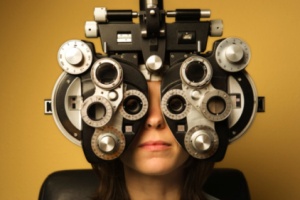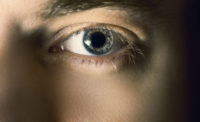 Vision is a critical aspect of many jobs. Whether an employee’s occupation involves driving, visual inspection and quality control, sorting by color or making critical life and death decisions, vision can be very important to safe and effective job performance. Still, vision requirements for specific jobs are seldom specified by employers and physicians rarely utilize appropriate vision screening devices in their practices.
Vision is a critical aspect of many jobs. Whether an employee’s occupation involves driving, visual inspection and quality control, sorting by color or making critical life and death decisions, vision can be very important to safe and effective job performance. Still, vision requirements for specific jobs are seldom specified by employers and physicians rarely utilize appropriate vision screening devices in their practices.
Until halted by the U.S. Supreme Court on June 22, 1999, vision requirements for commercial drivers, police officers and firefighters were targeted by the EEOC for discrimination lawsuits. In some cases, organizations that posted vision qualifications, such as "20/40 vision required," were pressured to eliminate these requirements. While the EEOC's activities are now limited to those persons with severe disabilities (blindness, monocular vision, etc.), you can expect continued and expanded activity by state fair employment practices departments to work toward the elimination of vision requirements.
Persons with myopia who can perform the job should be hired. But if the job requires performance at a measured level of 20/20 and the individual's myopia makes him or her only capable of only 20/40 performance, that individual should not be hired if no reasonable accommodation is available.
Vision requirements can be determined for jobs for which visual abilities are critical. Factors in assessing whether vision requirements are warranted include:
• Does the job involve life or death decisions? Firefighters, emergency service providers, law enforcement officers, correctional officers, lifeguards, and medical professionals must, at times, make life or death decisions on the basis of their visual assessment of a given situation. The failure of proper performance in visual tasks could be tragic.
• Is speed a factor in task performance? If decisions must be made quickly on the basis of visual stimuli, vision may be related to job performance. Inspection workers, for example, who fail to see color or defects in a product because of lack of acuity, could be failing to adequately perform essential functions of the job.
• Are critical tasks to be performed in dim light or relative darkness? Vision scientists have determined that acuity should be at least twice as good to perform a task in dim light or darkness as opposed to a well-lit environment.
• Is an employee working alone? Many jobs may require an occasional vision-dependent task, but if several people are in close proximity to the worker, assistance may be given. Tasks that are not performed alone are not suitable tasks to set vision requirements.
• Can the job be accommodated? New technology in vision-assistive devices now allows persons with low vision and blindness to perform many jobs. Vision requirements must be based on tasks that cannot be modified by currently available technology.
• Does the job involve driving? State driver's licensing departments do not always check vision on license renewal. Possession of a driver's license is not proof that a given person has the visual capabilities necessary to operate a motor vehicle or even perform vision-related tasks. Arizona, for example, issues a driver's license at age 20 that does not expire until the driver reaches age 65.
Source: www.med-tox.com/vision/html



